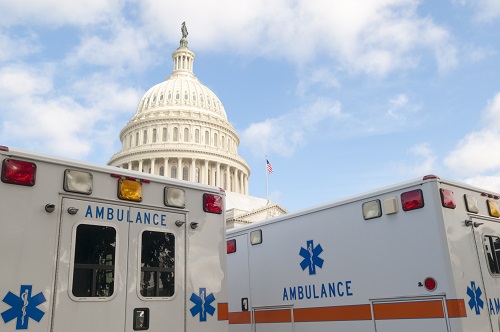Last week, indepedent pharmacists who have been steadily seeing their businesses theatened by Medicare D(isaster) met with Karl Rove to discuss the financial effects that the program is having on them.
Due to inadeuquate a/o late reimbursements, pharmacies are losing money by participating in Medicare D(isaster). Some are considering refusing to participate for fear of non-payment and the possibility of going bankrupt. The problem is cash flow. States used to reimburse pharmacies regularly for rx’s for Medicaid patients. But, under Medicare D(isaster), the payment schedule is determined by the insurers providing coverage. Another aspect of the problem is that under the insurance contracts that offered to the pharmacies were on a “take it or leave it” basis.
A report presented to Karl Rove read, in part, as follows:
“Most independent community pharmacists are small-business Republicans. Pharmacists want to be supportive of this administration, and they can play an active role in the midterm elections. But pharmacists need to be able to point to some corrective actions being taken by the administration.”
continued below
The subject of co-branded cards was also addressed as co-branded cards give the impression that one must use a specific pharmacy. Marvin D. Shepherd, a professor at the College of Pharmacy at the University of Texas, who attended the White House meeting pointed out
“You don’t have advertising on a Social Security card. Why would you have advertising on Medicare prescription drug cards?”
This gives the implication that is the inependent pharmacists could be exploiting the system for their own purposes. However, it is necessary to examine the actual cost that a pharmacy pays for rx’s. Take the case of pharmacist Dennis Song.
he buys from his drug wholesaler a 30-day supply of Lipitor, which lowers cholesterol, for $97.91. The insurers running Part D plans pay him between $99 and $100 on average for the drug…
A 100-day supply of Lisinopril, a blood pressure medicine, usually cost him at least $11 a bottle, and plans offered to pay him $10.
Chuck Oien, a pharmacist from Elgin, N.D., signed contracts with two insurers, as he would lose money every time he filled a prescription.
“I don’t know how much new business will be generated, but I would say I’ve lost more business than what it’s going to generate.”
Some senior citizens in Elgin, N.D., are forced to take their business elsewhere. A customer who needed $8,000 in rx’s last year, will now go to a pharmacy in Bismarck.
It is also necessary to point out that, when a person does go to one of the retail chains that also have a pharmacy, many will also purchase item(s) that they do not intend to. In this manner, a larger chain would as the profit in the second item would help offset the lower cost of the rx.
This administration earlier responded to the concerns of low Medicare D(isaster) reimbursements when gwb said,
“It’s not immoral to make sure that prescription drug pharmacists don’t overcharge the system.”
With that in mind, here are a few more facts.
* Would-be buyers of independent pharmacies far outnumber owners ready to sell.
* Although most independent pharmacies are still sold to chains, more and more buyers are pharmacist couples and pharmacist investor groups.
* There are more than a dozen formulas buyers and sellers can use to determine the value of a community pharmacy.
* Aspiring owners can buy an existing pharmacy, start a new pharmacy, or sign on as a junior partner working toward eventual ownership.
* In order to get top dollar, owners need to start planning for the day they sell out at least five years ahead of time.
Apparently, it isn’t immoral to attempt to force an independent pharmacy out of business.




